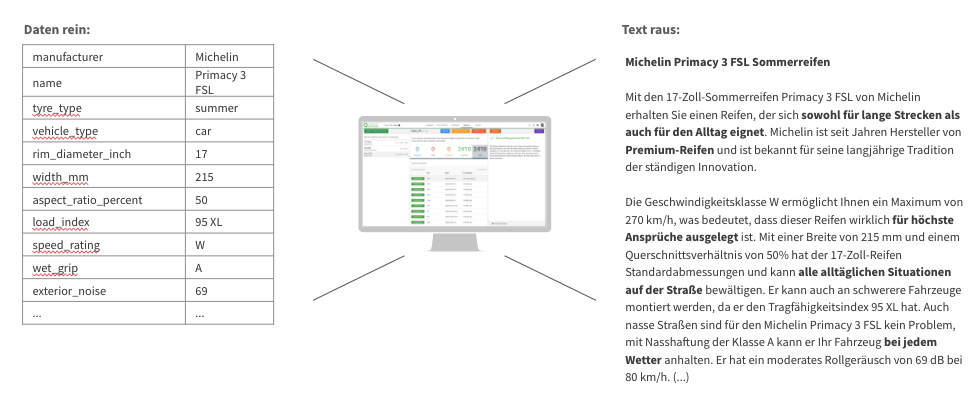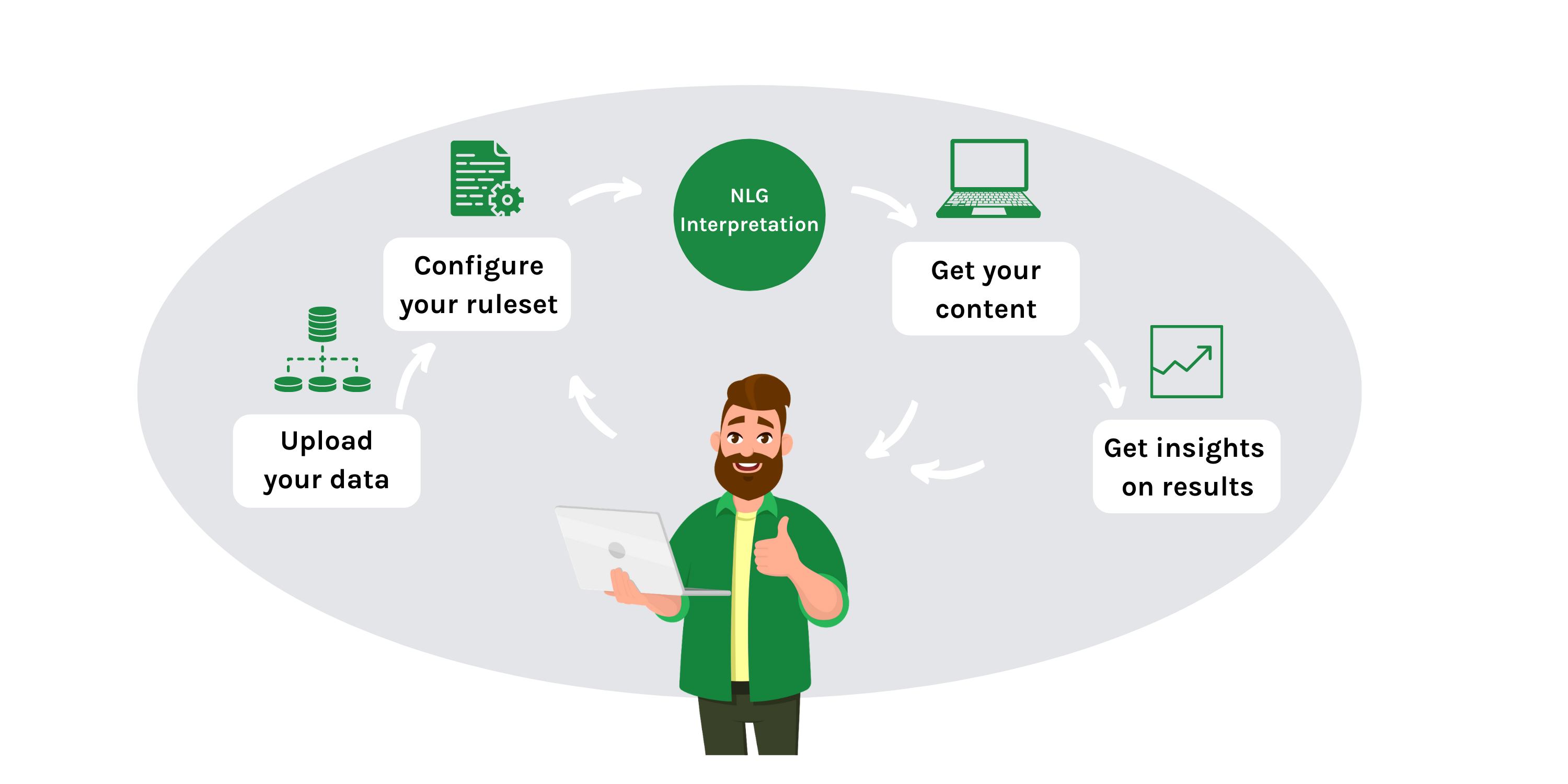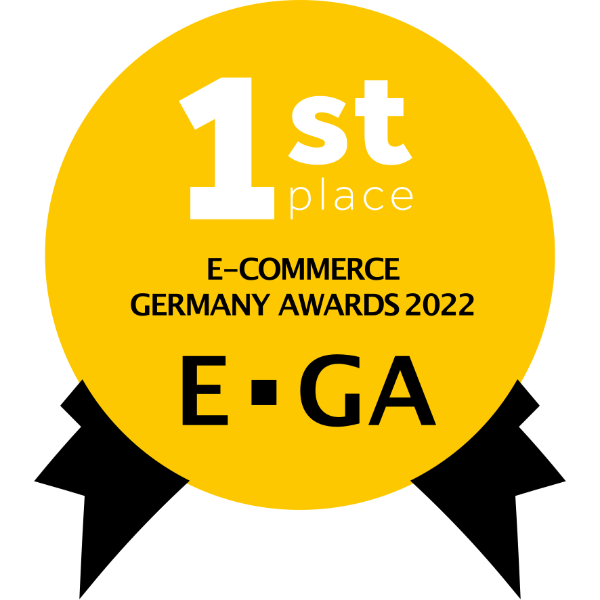
The ideal Customer Experience - how Automated Product Descriptions pave the Way
The customer experience (CX) is the most important aspect of a modern marketing strategy and thus, of course, of the customer journey.
The goal of every brand and every company should be to create an optimal buying experience for the customer at every touchpoint, thereby satisfying the customer's needs in every respect and thus building customer loyalty.
Only when all the necessary information can be obtained seamlessly across all touchpoints does the customer feel picked up and a bond with the company, the brand or the individual product ensue. The basis for a positive customer experience is therefore a good product experience (PX).
Taking the customer's needs seriously and providing him with comprehensive information is absolutely essential. After all, 95% of purchasing decisions are made unconsciously (Prof. Gerald Zaltman, Harvard University). A "yes" to purchase requires a positive experience - so a good product experience is essential.
Solid Data and good Product Descriptions - the Basis for a positive PX
A fundamental aspect of a good product experience is meaningful and informative product descriptions. After all, in online retailing, the product description is often the customer's only contact with the item. Informative, comprehensible descriptions generate trust in the product and the store. They are essential for providing the customer with the perfect sales experience around the product. In order to create these good, high-quality descriptions quickly and accurately for all channels, a solidly prepared database is essential, for example in the form of a product information management system (PIM).
A solid database thus serves as the basis for optimized product texts, which in turn are needed for a positive product experience. Together, these three cornerstones should ideally lead to an optimal customer experience.

This summary is, of course, highly simplified, but nevertheless illustrates the core of the issue well.
Of course, in addition to product descriptions, other aspects are also part of a good product experience, such as a form of address that is as personalized as possible or one that is tailored to cultural and regional conditions.
In turn, two things are important for a good database:
- the availability of product data
- Unstructured data from various sources must be processed and stored in a way that makes sense.
This could be done in a PIM system, for example. In addition to meaningful texts, good and descriptive images, possibly explanatory videos, etc., also belong to the product experience.
However, the key point is clear: to increase traffic, improve the customer experience, increase conversions and ultimately generate more sales, an outstanding customer experience is required. A key aspect of this is, as already mentioned, good product texts. We will discuss this point in more detail below.
The importance of meaningful and varied product descriptions
In general, the goal of every company is to grow. As explained earlier, one of the ways to achieve this goal is through a positive customer experience and the resulting long-term customer loyalty to the company.
However, the number one bottleneck to more growth is often poorly managed product information. And even if the required product information is all available and prepared, as well as neatly sorted and structured in a PIM system, this does not mean that varied and at the same time meaningful product descriptions are created.
However, these in turn form the basis for a good product experience, one of the cornerstones of CX. According to Forrester, a good PX can lead to up to 36% more sales (Forrester, US Cross-Channel Retail Sales Forecast 2014-2018).
Up-to-date and unique product descriptions (unique content) are of immense importance not only for the reasons mentioned above, but also because they:
- provide relevant and accurate information to potential customers
- help to highlight the special features of products and thus the products themselves
- provide sustainable SEO
- increase the chance of conversions
- help to reduce the rate of returns
The challenge here is to create the enormous amount of product descriptions needed, and in addition to keep them always up to date. However, this cannot usually be done manually, especially in larger online stores, and would only devour incredible financial as well as human resources.
The solution: automated product descriptions
Automated content generation or Natural Language Generation (NLG) offers the solution here!
If sufficient good data is available, numerous new texts can be generated at the push of a button after a short training period. This not only simplifies the creation of texts, but also provides an immense competitive advantage. An improved time-to-market is guaranteed and a quick textual reaction to changes is no longer a problem.

But how does the generation of automated product descriptions work?
The natural language generation software is data-driven - each text is based on a data set with structured information. The user creates logics, statements and variances in the desired style and the software uses these to generate natural language texts. In this way, adjustments for many texts can be made in the shortest possible time and in a resource-saving manner - for seasonal events, for example. The generated product descriptions are thus not only varied, but their creation is also scalable thanks to automation. Managing the generation and delivery of large volumes of text has never been easier!

The advantages of NLG are therefore clear: It is not only an important building block for an optimal CX but also saves an enormous amount of time and money!
→ Time saving:
- create recurring writing tasks easier and faster
- put product descriptions online in real time
- shorten time-to-market
→ Money savings:
- savings in editorial resources reduce costs
- an increase in organic traffic leads to savings in the ad budget
- thanks to optimized product texts, the return rate decreases while increasing sales through more conversions
Resume
A positive customer experience is the be-all and end-all for any company. The ultimate goal is to satisfy and retain the target group via a smooth customer journey and to encourage them to buy again.
Achieving this means considering and satisfying many individual components. A good experience around the product (PX) and the online store plays a central role. As explained, meaningful, always up-to-date and informative product descriptions are an enormously important aspect for this, which is still too often neglected.
Especially for online stores with a large number of articles, the manual creation and constant updating of associated descriptions is not feasible. Unfortunately, the manufacturer's specifications are still often simply copied and pasted. The result is often incorrect, outdated texts and/or duplicate content. This is not only bad from an SEO point of view and is penalized by search engines, but also by potential customers who then prefer to buy elsewhere.
The investment in software for the automated creation of texts and product descriptions is therefore definitely worthwhile and ultimately represents not only a financial relief.


